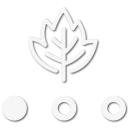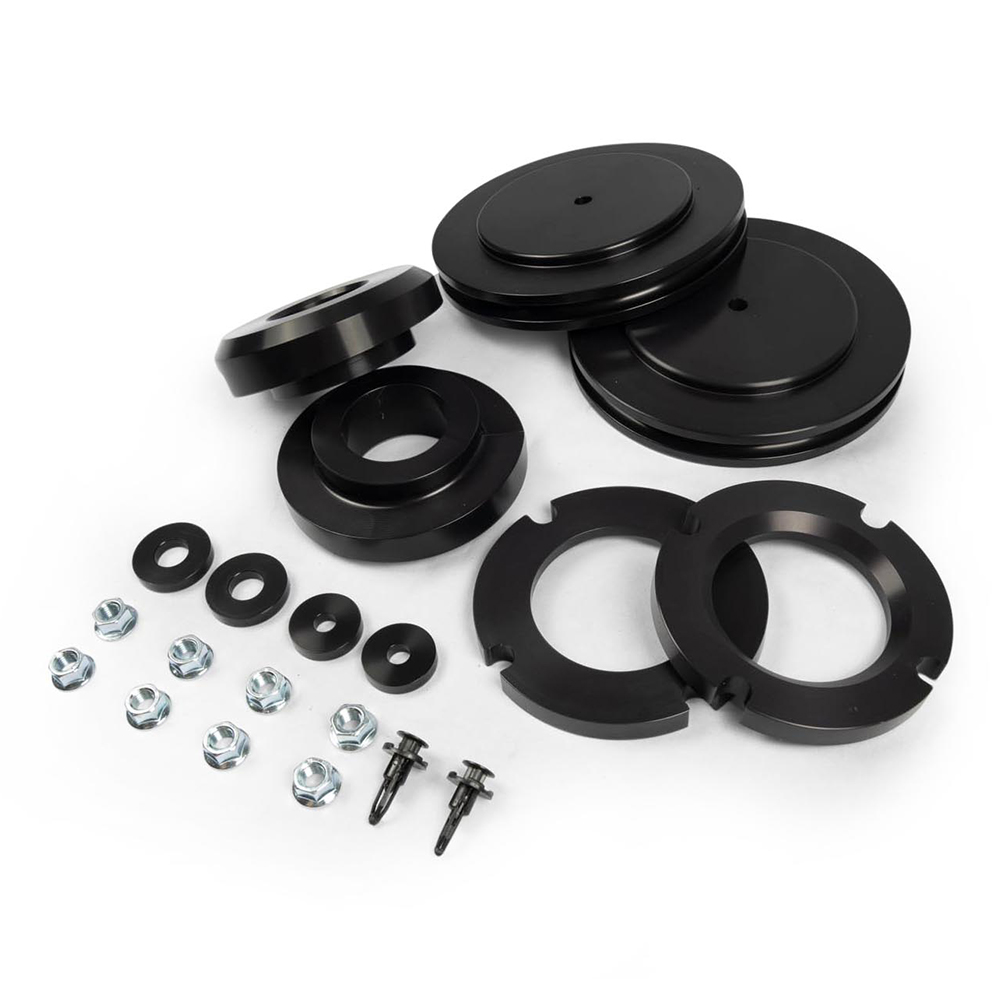If I get tires that are a few inches larger, would the odometer, speedometer, ABS, and traction control all need to be adjusted? Anything else other than these items? Does the shop usually do all of this for you? Thanks.
What gets adjusted when increasing tire size?
- Thread starter RemoteBound
- Start date
-
Guest, UPDATE We went through the site migration runbook and completed all steps. We will need to complete the migration next week, but will leave the forums up for the weekend. A few days after maintenance, a major upgrade revision to the forum site will occur.

Advocate II
A gear swap will bring things back in line, but it isn't cheap. A "few inches" taller tire will have a significant effect on drivability, so you may want to consider that.
On some vehicles you can change settings in the computer, but I've never seen a tire shop recalibrate all the vehicle systems to match tire size.
On some vehicles you can change settings in the computer, but I've never seen a tire shop recalibrate all the vehicle systems to match tire size.

Traveler III
What vehicle? How much bigger tire? The odo/speedo will be off, in many vehicles that can be adjusted by editing the ECU/ECM/TCM calibration and some vehicles may have aftermarket modules available that can be plugged in to compensate and correct the speed/odo but it's worth understanding how those kinds of things work on each vehicles because some can also send modified signals to other computers that control things like ABS, steering, stability/traction control, etc like you suspected. Tire shops will usually not do anything along the line to correct speedo/odo except maybe offer a third party solution like selling you a module to compensate.
Regearing the differential(s) will help regain some/all of the lost mechanical advantage from a larger diameter tire, it just depends on how much larger the tire is and how big of a gear can fit in the diff housings.
Regearing the differential(s) will help regain some/all of the lost mechanical advantage from a larger diameter tire, it just depends on how much larger the tire is and how big of a gear can fit in the diff housings.
I have a 2021 Toyota Sequoia TRD Pro that has stock P275/65R18 tires, which are 32.1". I was thinking of upgrading to 35".

Traveler III
Do some research on fitting 35" tires on that vehicle. It may require significant modifications to the suspension, wheel well, body mounts, etc. It will definitely hurt mpg and driveability.I have a 2021 Toyota Sequoia TRD Pro that has stock P275/65R18 tires, which are 32.1". I was thinking of upgrading to 35".

Steward I
Going from 32 to 35, I can see how the odometer and speedometer would be off by 9%, but how is the ABS affected? Doesn't that just reduce hydraulic pressure when it senses that the wheel is turning significantly slower than vehicle speed? Given that both parts of the comparison are equally affected by the tire change, it would seem to be a wash.
Hmmmm OK it sounds like it's more work than I feel like going through at the moment. I may just stick with the stock size and go with this basic lift kit for now.

 westcottdesigns.net
westcottdesigns.net

2020-2022 Toyota Sequoia Fox TRD PRO Lift Kit - Westcott Designs
This is for a Factory Fox TRD PRO, exclusively for the 2020-2022 Toyota Sequoia. This is not a spacer lift. This kit does not change the geometry of the factory suspension. This kit will not limit your factory travel or extend the travel pass factory.

Advocate III
- 5,584
- First Name
- Michael
- Last Name
- Rose
- Member #
-
20990
- Ham/GMRS Callsign
- W7FSB
- Service Branch
- US ARMY Retired
Going from 32-35” tires all you would need to do is reprogram the ECU to accommodate the larger tires. Any “Tuner” shop or dealership can do this for you at about $100 or so. Later down the road a regear in the differentials would help with MPG and bringing the torque back into the power range of the engine. But isn’t necessarily needed right a way.Hmmmm OK it sounds like it's more work than I feel like going through at the moment. I may just stick with the stock size and go with this basic lift kit for now.

2020-2022 Toyota Sequoia Fox TRD PRO Lift Kit - Westcott Designs
This is for a Factory Fox TRD PRO, exclusively for the 2020-2022 Toyota Sequoia. This is not a spacer lift. This kit does not change the geometry of the factory suspension. This kit will not limit your factory travel or extend the travel pass factory.westcottdesigns.net
You are way overthinking this. Sensors don’t care what size tires you are running, just the computer. Change the parameters inside the computer and 80% of your problems go away… the last 20% is mechanical… ie lift to fit the tires without rubbing on compression and turning, and regearing as stated earlier.
What gets adjusted when increasing tire size?
your wallet!
your wallet!

Trail Blazer III
I did the regearing on my Dodge ram. I went from 4:11 with a limit slip to 4:88 with a Detroit locker in the rear. I saved that for last because I needed to know just how weight I will be carrying on a daily basis and would then calculate the right gears needed to get the power back. So save the gears for last. Cost for regearing and a locker and install. $4+k.
Looking at this kit, these guys either have no clue what they are doing or the website is wrong. Or both. I checked for the 4Runner TRD Pro 2021 with Fox suspension and they claim a front lift of 2” with the rear being 1.25”. This WILL change geometry since the TRD Pro is ALREADY “leveled” - but at least with proper suspension components. And leveling is mostly suboptimal to begin with since if you’re not doing this for just a mall crawler you’ll be adding significant weight in the back (gear, fridge, etc). You’re unbalancing your vehicle for no good reason at all.Hmmmm OK it sounds like it's more work than I feel like going through at the moment. I may just stick with the stock size and go with this basic lift kit for now.

2020-2022 Toyota Sequoia Fox TRD PRO Lift Kit - Westcott Designs
This is for a Factory Fox TRD PRO, exclusively for the 2020-2022 Toyota Sequoia. This is not a spacer lift. This kit does not change the geometry of the factory suspension. This kit will not limit your factory travel or extend the travel pass factory.westcottdesigns.net
So, this looks like a great kit if you want to do something that makes not much sense.

Pathfinder II
I have a 2021 Tacoma and have been debating this question for a while. I can only tell you where my head is at, that is my only experience! I had wanted to go to 33" (30.6" is stock). After reading so much about re-gearing, less MPG, braking distance increase due to heavier rotating weight of the wheels, etc., I am simply leaning towards more aggressive all terrain tires in stock size, or at most 32". Even getting more aggressive tires in stock size is going to add some rotational weight.
I am pairing this with a 1.5" to 2" lift all around and a leaf spring upgrade in the back to support more weight (about 300 pounds permanent in the bed).
I am pairing this with a 1.5" to 2" lift all around and a leaf spring upgrade in the back to support more weight (about 300 pounds permanent in the bed).
Last edited:
So you're saying that someone who wants to get into overlanding should not get the Westcott Leveling Kit?Looking at this kit, these guys either have no clue what they are doing or the website is wrong. Or both. I checked for the 4Runner TRD Pro 2021 with Fox suspension and they claim a front lift of 2” with the rear being 1.25”. This WILL change geometry since the TRD Pro is ALREADY “leveled” - but at least with proper suspension components. And leveling is mostly suboptimal to begin with since if you’re not doing this for just a mall crawler you’ll be adding significant weight in the back (gear, fridge, etc). You’re unbalancing your vehicle for no good reason at all.
So, this looks like a great kit if you want to do something that makes not much sense.
I wound up keeping the stock tire size and went with Nitto Ridge Grappler 116T XL 4 Ply TiresI have a 2021 Tacoma and have been debating this question for a while. I can only tell you where my head is at, that is my only experience! I had wanted to go to 33" (30.6" is stock). After reading so much about re-gearing, less MPG, braking distance increase due to heavier rotating weight of the wheels, etc., I am simply leaning towards more aggressive all terrain tires in stock size, or at most 32". Even getting more aggressive tires in stock size is going to add some rotational weight.
I am pairing this with a 1.5" to 2" lift all around and a leaf spring upgrade in the back to support more weight (about 300 pounds permanent in the bed).
I'm saying that, after reading the content and claims on their website, I would not buy anything from them. You make your own decisions. Plus "leveling" an overland vehicle before all other mods are done and the final weight is determined is not the smartest move either. And spacer lifts are for mall crawlers and for looks only, if you want something that actually improves your vehicle offroad, get a real suspension lift with the correct springs for the weight you've put on the vehicle.So you're saying that someone who wants to get into overlanding should not get the Westcott Leveling Kit?
Bumpers, rock sliders, roof racks, drawer systems, fridges, a pull out kitchen, propane tanks on the rear, roof top tents, larger tires and a spare in a different position, and whatever other stuff you'll put on a vehicle SIGNIFICANTLY impact the weight and balance. Stock suspension is not set up for this. And stock suspension with some metal spacers isn't going to be any better. If you want to build an overland vehicle right, suspension is the last item you do, after you know exactly what all the other weight and balance affecting changes are. Okay, you can do all the electrical and communication stuff later, as long as you're not adding a second battery (weight again).
Last edited:

Explorer I
It really depends on how much of a lift/leveling kit you put on “Generally” speaking anything 3 inches and under does not effect anything else and dispite what others have posted spacers are not just for “mall crawlers” they are a very effective way to achieve a smaller lift for lighter off roading not everybody wants or needs to prove how steep a hill or how big a rock they can go over. More often than not most people with large lifts and have a desire to show off how tough there rigs are have three other cars in the driveway and don’t use the rig for a daily driver which is fine but for those on a budget that just want to get into the back country a spacer kit works fine.

Member II
- 4,129
- First Name
- Dave
- Last Name
- Zimmer
- Member #
-
30139
- Ham/GMRS Callsign
- WRXV870
- Service Branch
- USN Retired
I'd have the vehicle aligned just to be sure. Never a bad thing to check alignment anytime you screw with the tires. If you are keeping the truck I recommend a lifetime alignment from a shop like Firestone or Goodyear. It's worth the money.

Off-Road Ranger I
- 2,865
- First Name
- Donald
- Last Name
- Diehl
- Member #
-
0745
- Ham/GMRS Callsign
- WRPN 506
Well, I agree almost 100% with your approach. However, when I built my vehicles I did a lot of simple math adding up the total probable weight of all the junk bolted on, where it would be bolted on, along with the weight of passengers, gear, extra gas, water, tongue weight. Then understanding GVWR, installed the appropriate suspension to support the additional weight. Interestingly enough, before the internet the weight estimates were close enough to get by. After the internet, my weight calculations were no longer estimates, but dead on. Armed with this I knew how much I had to increase my my payload. The vehicle weighs 5,000lbs+/-. The stock GVWR is 6500. I knew I needed at least 67 or 6800. So, I added a suspension that upped my GVWR to 7100+/-. In short, plan out the future of your vehicle build and stick with it. A friend of mine didn’t plan very well at all, and now after a pile of money, he’s too heavy and the rear sags horribly. He’s looking again for rear spring options.I'm saying that, after reading the content and claims on their website, I would not buy anything from them. You make your own decisions. Plus "leveling" an overland vehicle before all other mods are done and the final weight is determined is not the smartest move either. And spacer lifts are for mall crawlers and for looks only, if you want something that actually improves your vehicle offroad, get a real suspension lift with the correct springs for the weight you've put on the vehicle.
Bumpers, rock sliders, roof racks, drawer systems, fridges, a pull out kitchen, propane tanks on the rear, roof top tents, larger tires and a spare in a different position, and whatever other stuff you'll put on a vehicle SIGNIFICANTLY impact the weight and balance. Stock suspension is not set up for this. And stock suspension with some metal spacers isn't going to be any better. If you want to build an overland vehicle right, suspension is the last item you do, after you know exactly what all the other weight and balance affecting changes are. Okay, you can do all the electrical and communication stuff later, as long as you're not adding a second battery (weight again).

Off-Road Ranger I
- 2,865
- First Name
- Donald
- Last Name
- Diehl
- Member #
-
0745
- Ham/GMRS Callsign
- WRPN 506
I’ve used 1.5” spacers for a very short time. Front driveshaft went out after only 40,000 miles. Then after a bit of research put a proper suspension underneath the vehicle. A spacer kit works just fine, is like saying that a door works just fine even though it is being slammed all the time. Eventually and prematurely the door will fail, and so too will spacers foul a stock suspension/drivetrain.It really depends on how much of a lift/leveling kit you put on “Generally” speaking anything 3 inches and under does not effect anything else and dispite what others have posted spacers are not just for “mall crawlers” they are a very effective way to achieve a smaller lift for lighter off roading not everybody wants or needs to prove how steep a hill or how big a rock they can go over. More often than not most people with large lifts and have a desire to show off how tough there rigs are have three other cars in the driveway and don’t use the rig for a daily driver which is fine but for those on a budget that just want to get into the back country a spacer kit works fine.

Member III
You might want to calibrate your speedo, I went from 32" to 33" and noticed a change of 3 to 5 mph difference and also the shift points were slightly off, it would hold a gear longer than it should.

